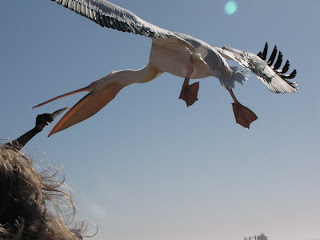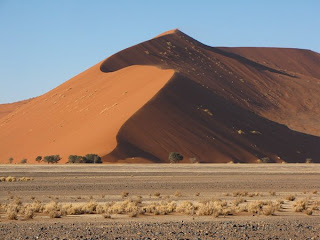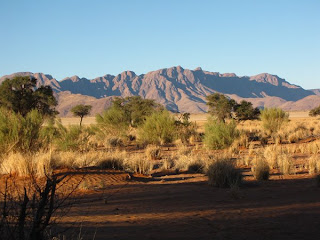The flags have disappeared off the cars, the media are desperately scraping the bottoms of barrels for the final stories about Spanish celebrations (and profound disappointment for everyone else), and I can gratefully return to ignoring football for another four years. I concede that there were a few exciting moments during the WC, mostly early on, but by the time it got to the final I (and I suspect most non-Europeans) didn't really care who won - and it was pretty dull and unedifying to watch 22 men hack at each other for two hours until eventually, by the laws of statistical probability, the ball went into a net - it hardly mattered which one. Like most of the other games it could've gone either way, and I'm sure that if you replayed the whole WC you'd get a totally different set of results - referee decisions and sheer luck count for as much or more than skill and determination.
The real problem with football, in my view, is that there aren't enough points. I can't think of any other sport in which a single point, struggled for over hours of play, can make the difference between winning and losing. The best side can lose because of a linesman being distracted by a seagull or because the ball happens to hit someone's hand, or someone accidentally gets kicked in a melee in the goalmouth. This is ridiculous. The game cries out for drastic reform. Football would be much fairer and far more interesting if there were more points. I therefore offer the following suggestions to improve the game of football and make the next World Cup more worthy of attention:
- have a points system for everything that happens: ten points for a goal, one point for a free kick, two points for a corner. Minus two for a foul, minus four for a penalty, minus one for spitting. Two points for actually dribbling with the ball (rather than just dribbling) and passing an opponent. Show the running total on the scoreboard for everyone to see.
- admit that football is a contact sport. Allow the players to crash into each other, cut each other down, hold on to each other's shorts and shirts. Let play go on, no stoppages. The players can wear body armour if they want, it's up to them - rugby players don't seem to need it and don't complain nearly as much.
- get rid of the offside rule. It'll be a tactical decision how many players hang around in each goal mouth; it's the same for each team, so completely fair. Only the goalkeepers would complain, because there'd be more goals. That's the point, we want more goals. (Alternatively, wire up the pitch so that any player running offside gets a faint electric shock; there'd be no more forward passing to players in an offside position, because they'd be writhing on the ground, incapacitated.)
- widen the goal; make it twice as wide.
- have a wild ball now and then, i.e. throw an extra ball on the pitch at random moments, like in pinball. That would keep the players on their toes. And we'd get more goals.
- have a random period of five minutes when the referee and linesmen can join in the game on the side they prefer - on the same side or different sides, as they like.
- equip the spectators with paintguns and two paintballs each - one green and one red. They can shoot the green ball at their favourite player and the red ball at the player they hate most. At the end of the game the player covered with the most green paint gets a reward, the player with the most red paint is banned from the next five games. (This would also encourage all players to keep running, all the time, to present a more difficult target.)
I'm thinking of applying for Seth Blatter's job - with the set of suggestions above I could transform the game of football into something actually worth watching.





























